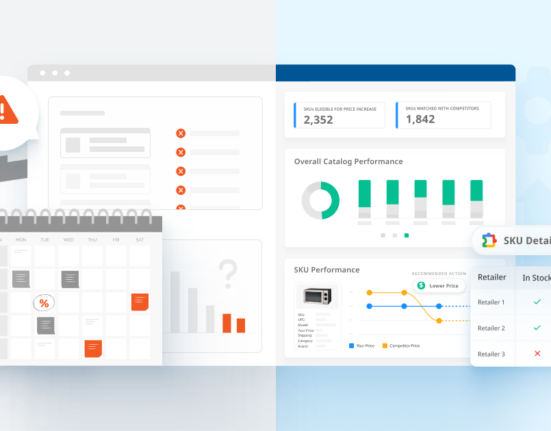In retail operations, the interaction between category management and price optimization teams is key to staying competitive. This dynamic, often marked by a nuanced blend of cooperation and conflict, plays a crucial role in a retailer’s ability to grow sales, maintain competitiveness, and satisfy customer demands.
However, the inherent differences in approach and objectives between category managers and pricing analysts can lead to internal challenges, underscoring the importance of finding a harmonious balance.
Editor’s Note: Contributing author is Vaibhav Laroia, Sr. Director of Customer Success at Wiser Solutions.
Category Managers: The Strategy-Driven Architects
Category managers bear the critical responsibility of curating a retailer’s product assortment, ensuring it aligns with market demands and remains competitive. This role extends beyond mere product selection; it involves strategic decision-making on product range, depth, and presentation. Category managers analyze market trends, customer preferences, and competitive offerings to create an assortment strategy that attracts and retains customers. Their decisions directly impact a retailer’s brand identity and market positioning, making their role fundamental to the retail strategy.
Pricing Analysts: The Data-Driven Counterpart
Pricing analysts, armed with sophisticated tools and a wealth of data, scrutinize market conditions, competitor pricing, and internal sales metrics to devise pricing strategies that bolster profits and market share. Their domain is the realm of numbers—analyzing past performance, predicting future trends, and identifying price points that maximize revenue and customer engagement. This analytical prowess enables pricing teams to suggest dynamic pricing strategies, tailor promotions, and optimize markdowns, ensuring the retailer’s offerings are attractively priced for targeted customer segments.
The Point of Contention
The divergence in priorities between these two teams can often become a point of contention. Category managers, focused on broadening product assortment and enhancing market presence, might prioritize competitive pricing to attract customers to a wider product range. In contrast, pricing analysts might advocate for price adjustments based on elasticity and demand forecasts to maximize profit margins. This difference in focus can lead to disagreements; for instance, when a category manager wishes to lower prices to drive sales of a new product line, while the pricing analyst recommends higher prices for the same products based on their premium quality and unique features.
A common challenge observed across the industry involves misaligned incentives and the use of sub-par input data. While pricing teams are tasked with achieving specific business outcomes, they frequently lack the authority to implement their pricing recommendations. This authority often lies with the merchant or category teams, especially for the main and core products. That these teams have different incentives can lead to a reluctance to conduct pricing experiments or to accept recommendations that might raise the price of a product. This disconnect is a significant barrier that hinders retailers from adopting data-driven pricing strategies effectively.
Bridging the Gap with Price Optimization Software
Advanced price optimization software emerges as a critical tool in bridging the gap between category managers and pricing analysts. These tools analyze complex datasets, allowing for a nuanced understanding of how pricing changes affect customer behavior and sales performance across different categories. By providing a data-driven foundation for pricing decisions, these platforms can mitigate the subjective disagreements between category management and pricing teams. They allow for the simulation of pricing strategies, offering a predictive glance at potential outcomes, thus enabling both teams to align on strategies that promise both competitive pricing and profit maximization.
Conclusion: Toward Cohesive Strategy
The successful integration of category management and price optimization efforts is paramount for retailers aiming to thrive in today’s competitive environment. Recognizing the distinct yet complementary roles of category managers and pricing analysts is the first step toward fostering a culture of collaboration.
By leveraging advanced price optimization tools, retailers can create a cohesive strategy that balances the dual objectives of maintaining competitive assortments and optimizing pricing. This balanced approach not only enhances a retailer’s market positioning but also ensures a customer-centric approach to product offering and pricing, laying the groundwork for sustained growth and profitability.









